
Winter Gardening
by Marcus Eyles
Discover simple tips to create a garden that will give pleasure all year round, whatever the weather.
Whether you’re looking to introduce colour to containers for the festive period, tidy up your garden for the new year, grow your fruit and veg, or prepare your outdoor space for spring, Dobbies’ Horticultural Director, Marcus Eyles, has outlined how to get the most out of your garden this winter.
Tidy up
When tidying up our gardens in winter, we should be mindful not to clear too much away. Leaving a layer of organic matter on the surface of beds and borders and underneath hedges and trees will give wildlife a place to shelter from the elements.
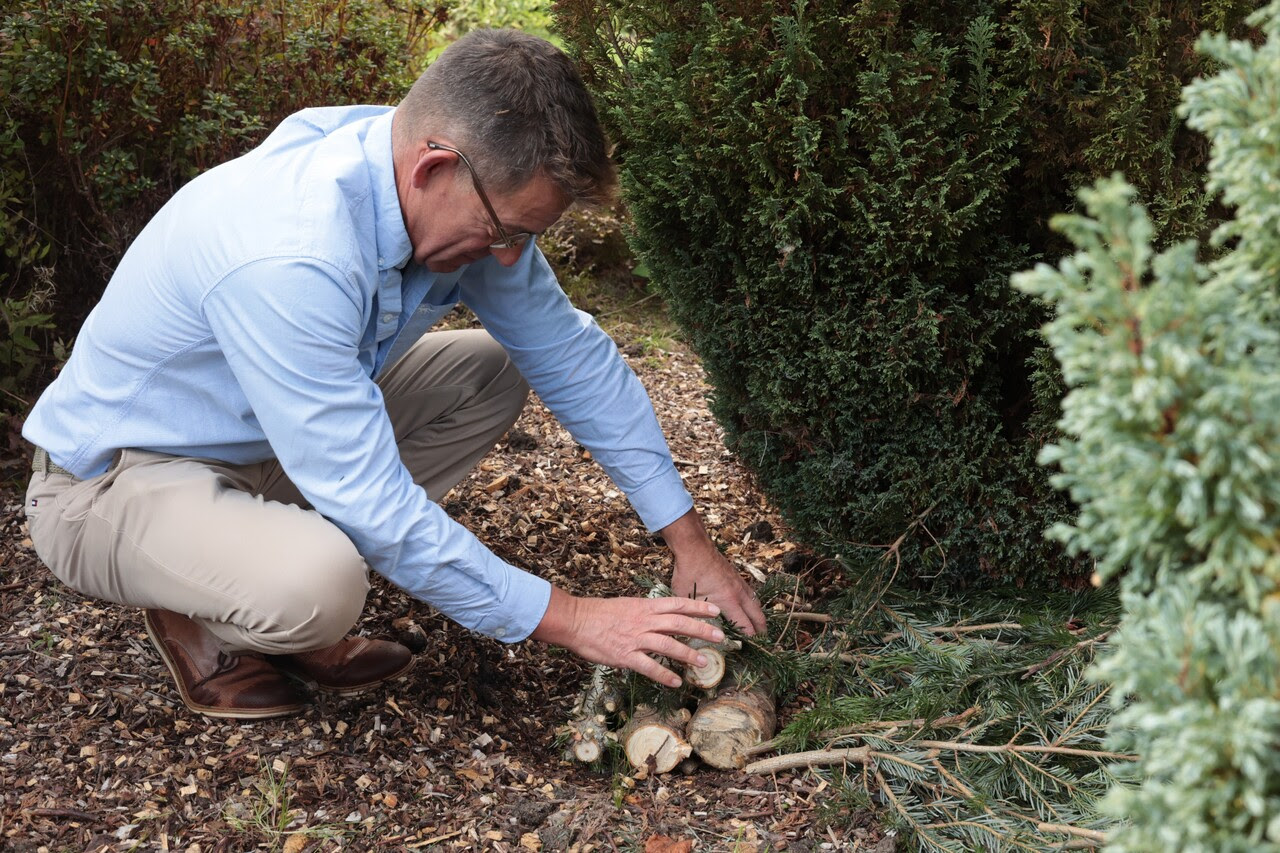
Log stacking to provide a sanctuary for animals.
Stacking logs together in piles will also provide a sanctuary for animals like hedgehogs during the colder winter.
Another vital job during winter is pruning roses to ensure any harsh weather doesn’t interfere too much with them. Take the stems down by half to stop the wind-catching plants as much over winter, and then in spring, prune back fresh new shoots, which will give excellent structure for the plants ready to flower next year.
You shouldn’t need to mow your lawn in winter. However, you should remove and compost any fallen dead leaves as these will block air and sunlight, two things that grass needs to survive.
Protect plants
Plant protection is one of the most essential parts of your winter gardening checklist and will ensure your plants survive the season. To ensure good soil health and protect your plants’ roots when temperatures drop, mulch well with Dobbie’s brand bark landscape, which can also be used as an extra layer of protection for plants during the colder months.
Exotic plants and varieties, including Cordylines, Ceanothus and Phormiums, will benefit from frost protection fleece in winter. For extra protection, place tender plant varieties like Pelargoniums and Fuchsias in a sealed grow house or cold frame during the colder months.
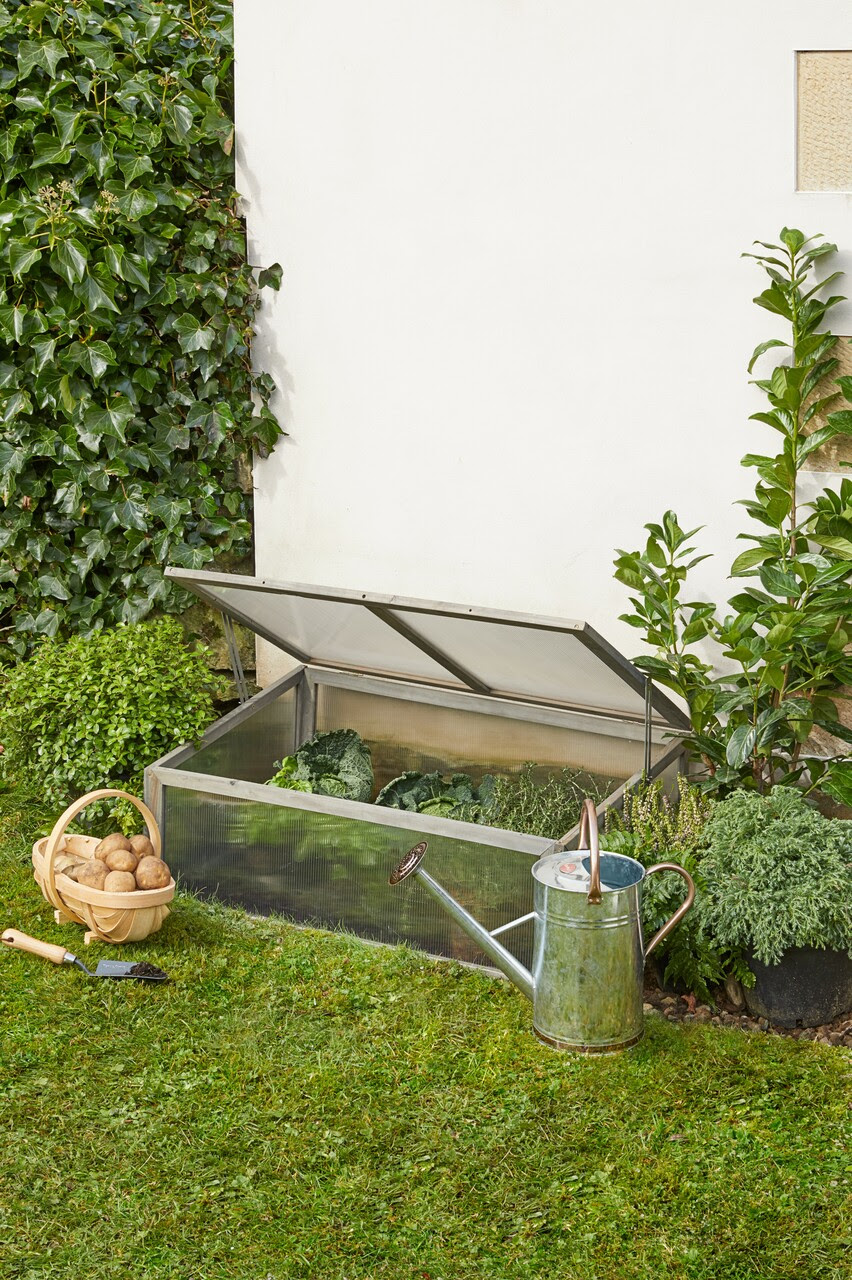
Grow all year-round
Instant winter colour
Refreshing your containers and hanging baskets is an excellent way to give your winter garden a burst of colour. Conifers, winter Heathers and Ivy will all produce a beautiful display and stand up to cold weather. In addition, Callunas and Ericas are great for winter pots as they’re frost-resistant and work well to frame your doorway all season long.
For those working with compact spaces, Cyclamen can be planted in late autumn and works well in window boxes and balcony displays for a pop of vibrancy, proving you don’t need a garden to enjoy winter colour.
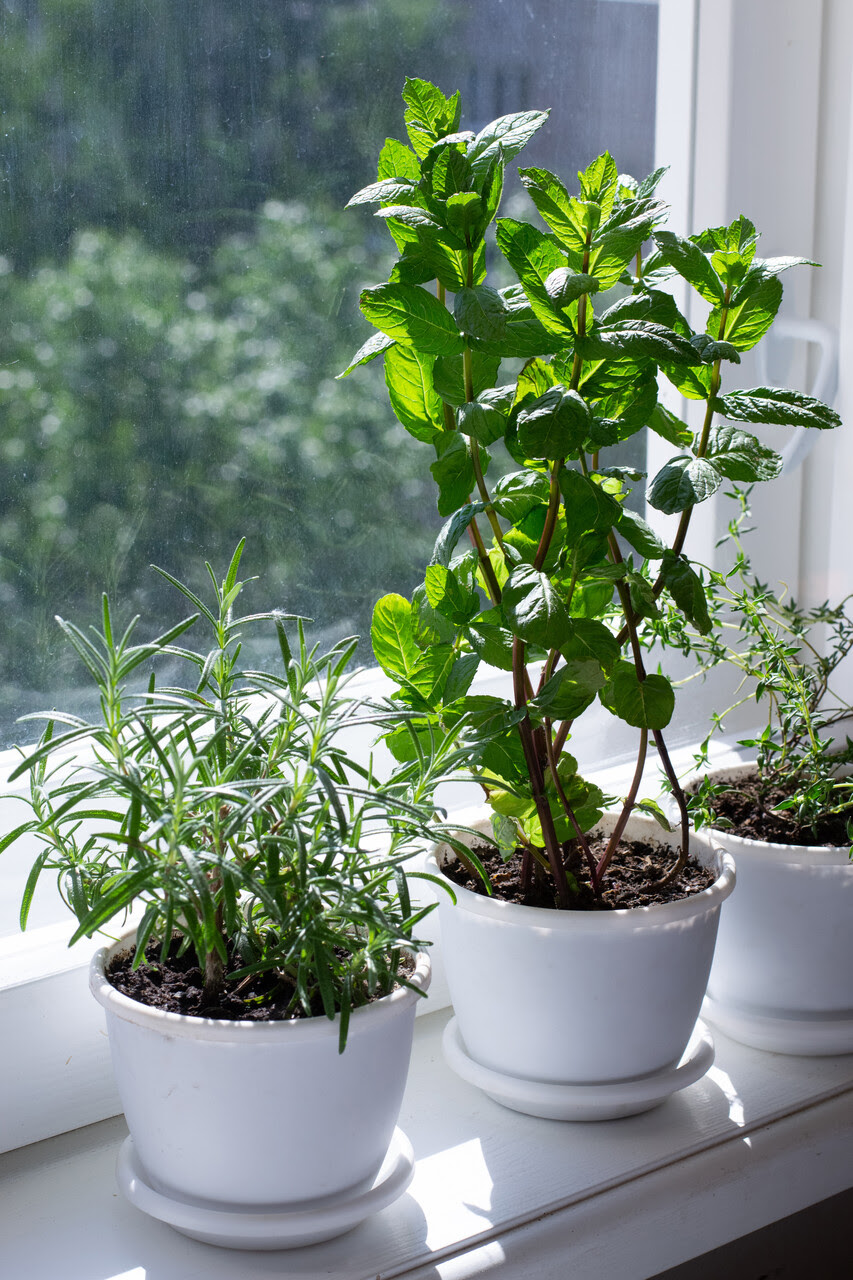
Herbs growing indoors in winter
For a blooming display that will flower right through until spring, plant winter-flowering Violas and Pansies now in either pots, beds or borders. To ensure they don’t get waterlogged, plant in draining soil, and if using containers, put a layer of stones or gravel into the bottom of your pot.
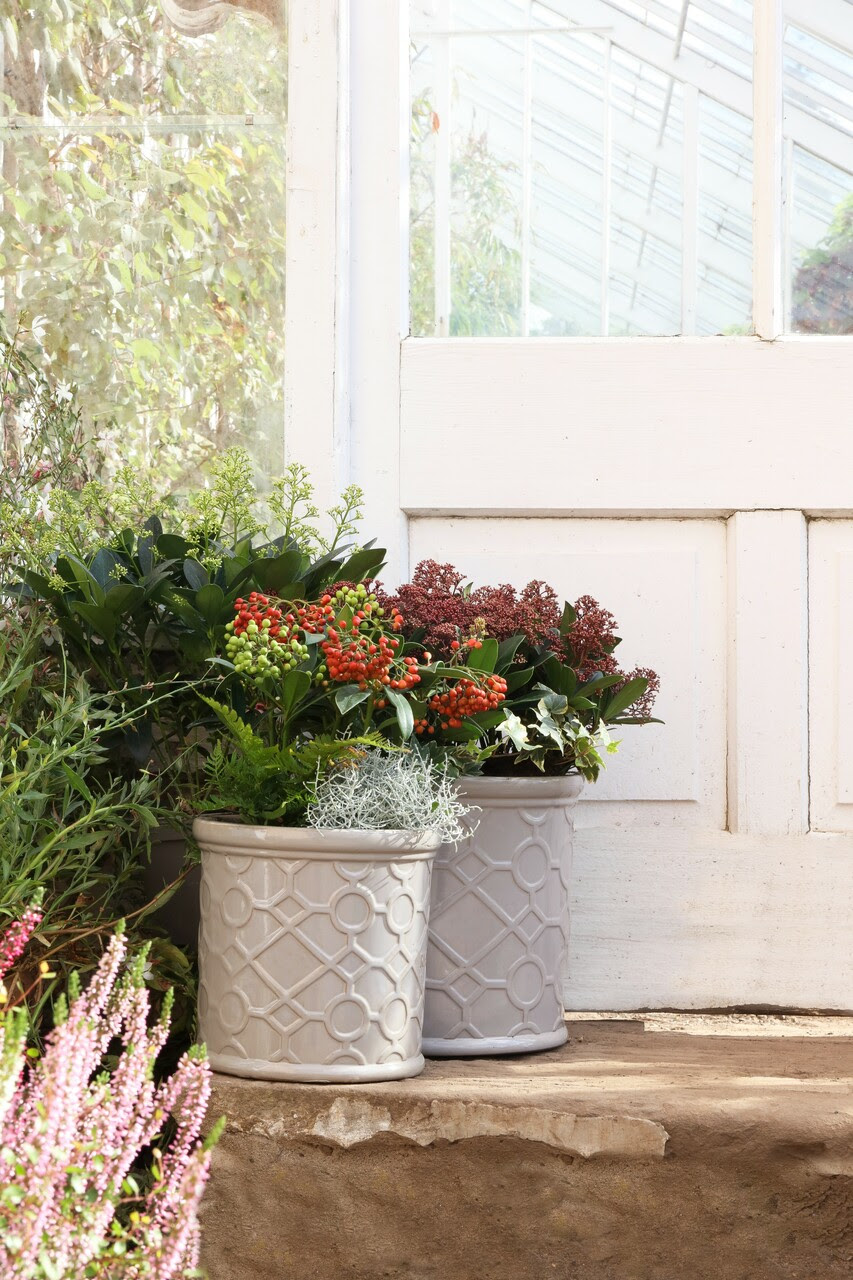
Colourful winter pots
Grow Your Own
Contrary to what people might think, it’s possible to continue growing your produce in the winter months, but there are a few steps to ensure a good crop. Herbs like Mint, Rosemary, Sage and Thyme can all be grown on a windowsill ready for use in winter dishes and alleviate the need for a dedicated vegetable patch.
It’s easy to grow salad crops year-round for those with a greenhouse or sealed grow house, and microgreens can be germinated as quickly as three weeks. To combat the shorter days, supplementary lighting can produce a boost and the warmth it needs to grow.
Regarding what can be harvested in time for Christmas dinner, kale, carrots, potatoes, and spinach will be ready in late autumn and, as long as appropriately preserved indoors, will make a tasty addition to Christmas meals.
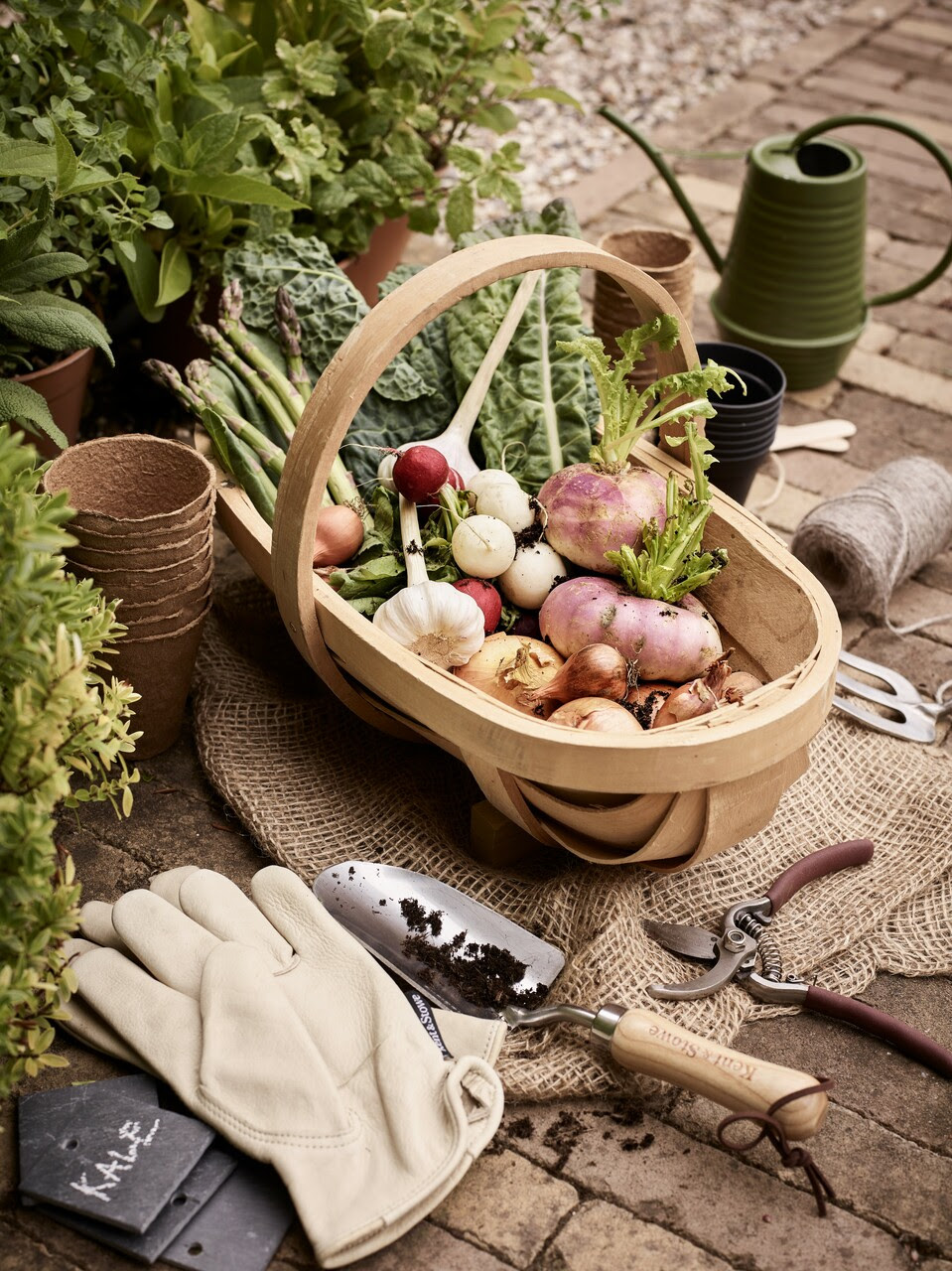
Harvest in autumn for Christmas
Water storage
Regarding being more sustainable in the garden, winter is a fantastic time to collect rainfall in water butts for use in the summer months.
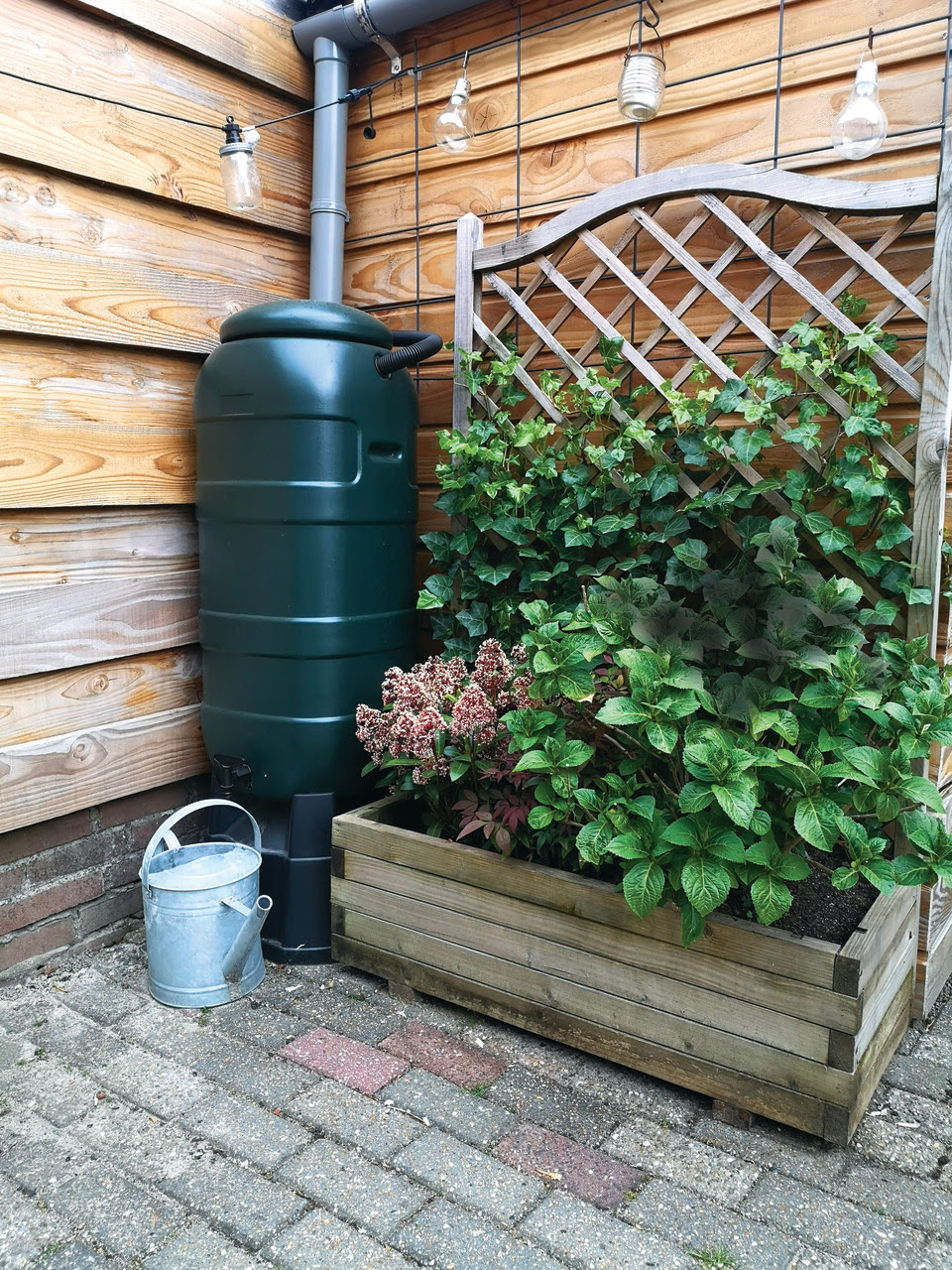
Collect rainfall in winter for use in summer
Any shed, greenhouse or garage can be used to collect water and conserve it for next summer as long as it has gutters and a downpipe to a drain at ground level. Doing this will help you reduce water usage in the event of a long dry spell next summer, and rainwater is better for your plants as it has a lower pH than water from the mains.
NorthernLife Nov/Dec 23




